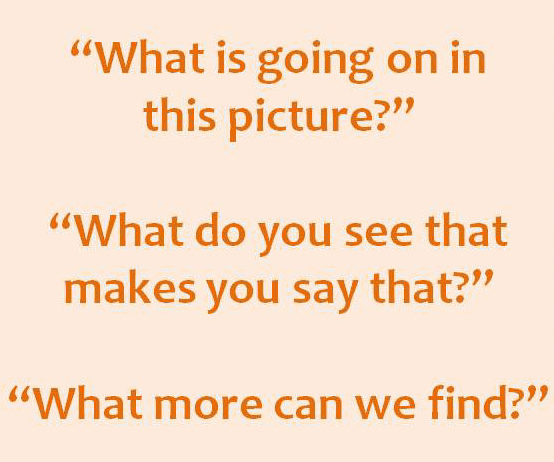A VTS Discussion with First Grade Students from Visual Thinking Strategies on Vimeo.
(source) In his 1997 article Thoughts on Visual Literacy, Philip Yenawine describes visual literacy as:
“…the ability to find meaning in imagery. It involves a set of skills ranging from simple identification (naming what one sees) to complex interpretation on contextual, metaphoric and philosophical levels. Many aspects of cognition are called upon, such as personal association, questioning, speculating, analyzing, fact-finding, and categorizing. Objective understanding is the premise of much of this literacy, but subjective and affective aspects of knowing are equally important.”
The three fundamental questions of Visual Thinking Strategy:
Abigail Housen and, later partnered with Yenawine, structure a theory of development around the experience of art. It has become popular as a basis for pedagogy in some schools, in many museums, and, as a foundational practice for art teachers and docents. (See: VTS Basic Manual: Learning To Think And Communicate Through Art; Housen, and Theory into Practice: The Visual Thinking Strategies, Yenawine. The latter article is available at VTShome.
VTS is very close to being in alignment with my own artmaking ethos, except it is missing the body. The body in this case is the viewing subject.
Here are four questions that could restore the body in the process of aesthetic inquiry:
(1) What do your findings feel like as emotions?
(2) What do your findings feel like in your body?
(3) Characterize your sense of your own experience?
(4) What are you doing to understand your experience?

